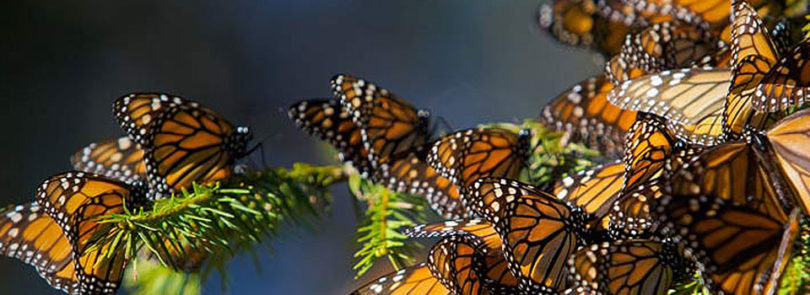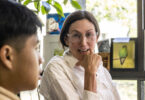A University of Georgia study that enlisted the help of hundreds of citizen scientists from across the U.S. and Canada has found that parasite infections in monarch butterflies increase during the summer breeding season, a finding that could help improve conservation efforts.
The researchers, led by postdoctoral associate Rebecca Bartel of the UGA Odum School of Ecology, studied populations of monarch butterflies in eastern North America, which migrate up to 1,500 miles each fall, and measured levels of parasitism in monarchs at their breeding grounds, at points along their migratory route, and at overwintering sites in Mexico. Their findings are featured as the cover story in the current issue of the journal Ecology.
According to Odum School associate professor Sonia Altizer, one of the study’s authors, the finding that parasite infections build up during the summer breeding season is likely due to the fact that parasites accumulate on host plants-milkweeds-in patches used by monarchs.
“Monarch population density increases from early to late in the breeding season, increasing opportunities for parasite transmission,” Altizer said. “Monarchs from sites that were more densely populated had a higher prevalence of infection.”
Altizer said that parasite prevalence decreased as the fall migration progressed. In addition, the prevalence of infection among monarchs wintering in Mexico was lower than for summer breeding or fall migrating monarchs. “This is likely because heavily infected monarchs are weeded out of the population during the arduous fall migration journey,” she said.
“Understanding the interaction between migration and infectious disease is fundamental to conservation efforts for many species. But the logistical challenges involved in collecting samples across the geographic scope of a species’ range, from breeding to overwintering sites, can be enormous.
The two citizen science projects the team drew upon were MonarchHealth, launched in 2006 and run from UGA, and the Monarch Larva Monitoring project, which began in 1997 and is run through the University of Minnesota. Altizer said that MonarchHealth volunteers capture wild monarchs, collect parasite samples using non-destructive methods, and send them to UGA for analysis. MLMP volunteers count monarch eggs, caterpillars and adults in wild milkweed patches during the spring and summer.”No single person could monitor monarchs across hundreds of sites simultaneously as the volunteers can,” she said.
Bartel agreed that the contributions of the citizen scientists were invaluable. “It allowed us as scientists to accomplish research objectives such as data collection across a broader geographic area than would otherwise have been possible,” she said. “It was also a way to engage people from a broad spectrum of ages and backgrounds in the scientific process and an exciting way to practice science education on the ground.”
Funding for the study was provided the National Institutes of Health and the National Science Foundation.






